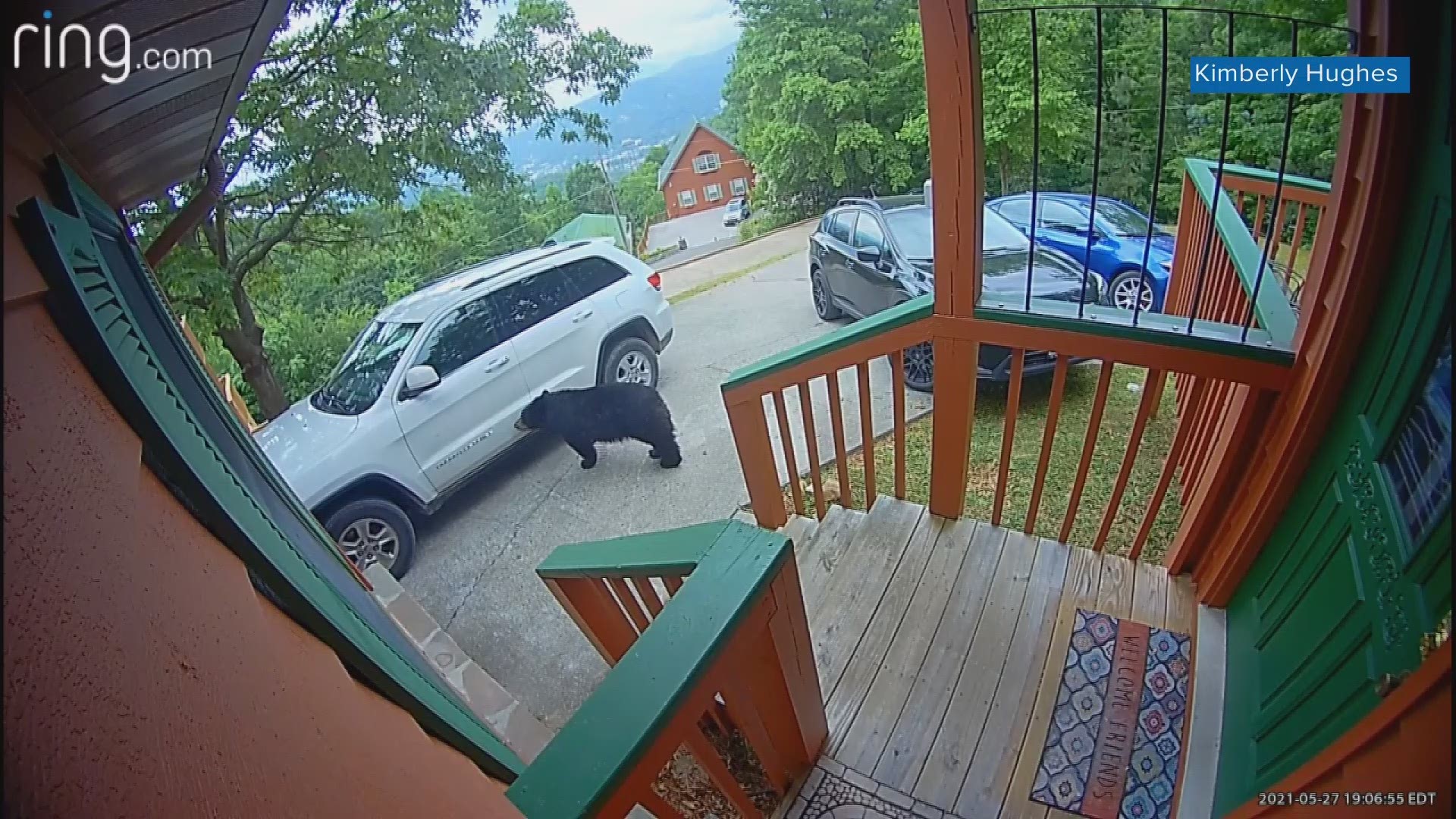GATLINBURG, Tenn. — Kimberly Hughes caught a bear trying to paw its way into a car outside her Gatlinburg cabin, Gatlin Views.
She saw it all happen on a Ring Doorbell recording. The bear walks up to a white SUV in the driveway, goes for the door handle with its paw, tries to open it up, but gives up not long after.
The bear sat, then layed down on the driveway. In a comment, Hughes said she had "never seen one laying down on the job."
Hughes was glad the car doors were locked and no one got close to the bear. There wasn't any damage, but things could have gotten much worse.
If you see a bear in public, the Great Smoky Mountains National Park rangers say not to approach it. Keep your distance, because you never know what the bear's behavior might turn into.
The National park Service says, each bear and each experience is unique; there is no single strategy that will work in all situations and that guarantees safety.
The NPS offers these tips if a bear notices you in the wild:
- Identify yourself by talking calmly so the bear knows you are a human and not a prey animal. Remain still; stand your ground but slowly wave your arms. Help the bear recognize you as a human. It may come closer or stand on its hind legs to get a better look or smell. A standing bear is usually curious, not threatening.
- Stay calm and remember that most bears do not want to attack you; they usually just want to be left alone. Bears may bluff their way out of an encounter by charging and then turning away at the last second. Bears may also react defensively by woofing, yawning, salivating, growling, snapping their jaws, and laying their ears back. Continue to talk to the bear in low tones; this will help you stay calmer, and it won't be threatening to the bear. A scream or sudden movement may trigger an attack. Never imitate bear sounds or make a high-pitched squeal.
- Pick up small children immediately.
- Hike and travel in groups. Groups of people are usually noisier and smellier than a single person. Therefore, bears often become aware of groups of people at greater distances, and because of their cumulative size, groups are also intimidating to bears.
- Make yourselves look as large as possible (for example, move to higher ground).
- Do NOT allow the bear access to your food. Getting your food will only encourage the bear and make the problem worse for others.
- Do NOT drop your pack as it can provide protection for your back and prevent a bear from accessing your food.
- If the bear is stationary, move away slowly and sideways; this allows you to keep an eye on the bear and avoid tripping. Moving sideways is also non-threatening to bears. Do NOT run, but if the bear follows, stop and hold your ground. Bears can run as fast as a racehorse both uphill and down. Like dogs, they will chase fleeing animals. Do NOT climb a tree. Both grizzlies and black bears can climb trees.
- Leave the area or take a detour. If this is impossible, wait until the bear moves away. Always leave the bear an escape route.
- Be especially cautious if you see a female with cubs; never place yourself between a mother and her cub, and never attempt to approach them. The chances of an attack escalate greatly if she perceives you as a danger to her cubs.

